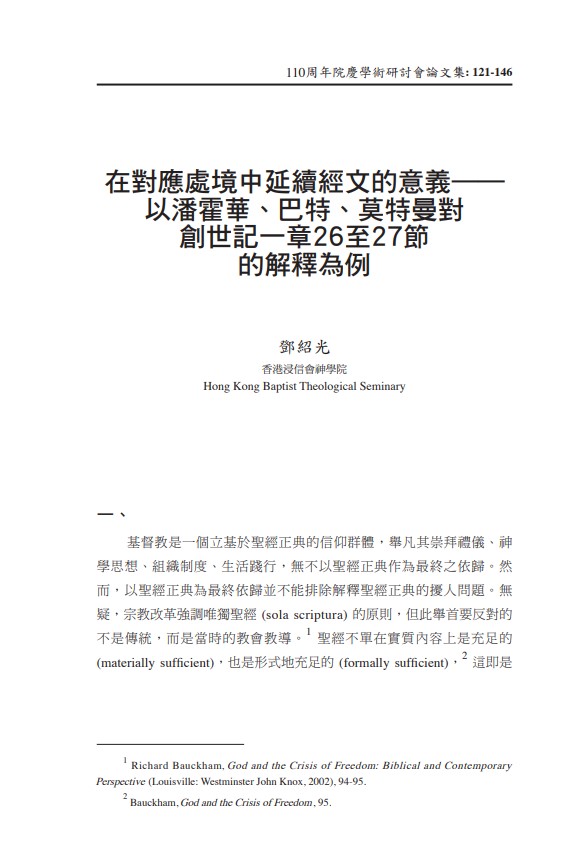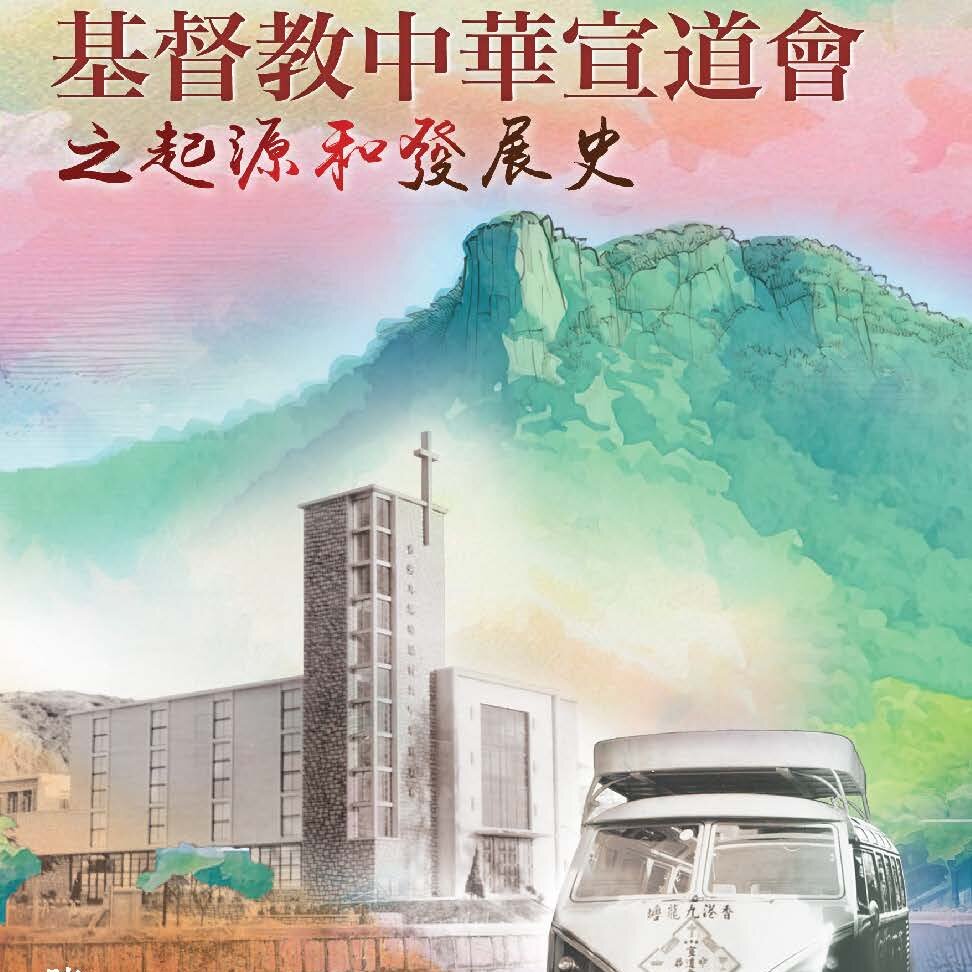在對應處境中延續經文的意義——以潘霍華、巴特、莫特曼對創世記一章26至27節的解釋為例/鄧紹光
鄧紹光
撮要
本文作者嘗試顯示新約研究學者包衡提倡的解釋聖經的觀點。一方面,處境是一道通孔,有助解經者尋找聖經的意義或/和涵義。另一方面,在新的處境中對聖經得出了新的了解,其之所以可以成立,乃在於這新的了解跟教會歷史上舊的了解有着某種連續性。我們嘗試以當代不同神學家對創世記一章26至27節的解釋為例,說明這一實踐。雖然潘霍華、巴特和莫特曼分別處於不同的社會、文化、生態境況中,他們對創世記一章26至27節的解釋,卻顯明了連續中的不連續、不連續中的連續。
ABSTRACT
In this paper the author is going to illustrate the interpretive idea advocated by the New Testament scholar Richard Bauchkam. On the one hand context is a lens helping the interpreter to find out the meaning and/or significance of the Scripture. On the other hand, the new understanding out of a new context is valid only under the condition that there is continuity between this new understanding and the other understandings in the church history. We try to give an illustration of this through various contemporary theologians’ interpretations of Genesis 1:26-27. Although Bonhoeffer, Barth, Moltmann are situated in various contexts with various social, cultural, ecological concerns, their interpretations of Genesis 1:26-27 can be seen as discontinuity in continuity, continuity in discontinuity.
原載於《教牧期刊》第27期及《建道學刊》第34期合刊(2010年7月),頁121-146。
最新文章
新手牧者研究計劃(三):新手牧者的身心靈狀態 / 盧慧儀
2025 年 11 月 19 日
個體與關係:滕近輝思想中「深化」的靈性觀 / 倪步曉
2025 年 11 月 18 日
香港九龍塘基督教中華宣道會之起源和發展史/陳智衡
2025 年 10 月 20 日
编辑精选
[電子書]困境與抉擇:「建道研究中心30週年誌慶」跨學科研討會論文集/廖炳堂、倪步曉主編
2025 年 1 月 2 日
從梧州到長洲:建道神學院125年的挑戰與恩典 / 陳智衡
2023 年 10 月 1 日
微小教會的見證/高銘謙
2023 年 6 月 1 日







